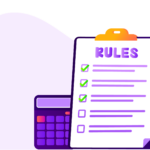The U.S. retirement system is the one government program that actually works well and can benefit all Americans – not just the rich or high-income earners. Why? Because it is based on simple math and not dependent on one’s wealth, skin color, religion, of socioeconomic background. Every American with earned income can contribute to an IRA and all of us have access to the same type of investment options including stocks, bonds, real estate and precious metals (to name just a few). The problem is, few Americans have been educated about its powers or truly understand its value.
Being self-employed actually has an enormous advantage when it comes to boosting ones retirement savings. In the following, we will discuss the myriad of retirement planning options you have when you’re self-employed.
- As a self-employed individual, you have many options to save for retirement
- The Solo 401(k) stands out as the premier retirement savings vehicle
- If you are not eligible for the Solo, there are several IRA types to choose from
Traditional IRA
The traditional IRA is an individual retirement arrangement (IRA) that was established by ERISA in 1974. Anyone with earned income can contribute to the plan up the the annual limit as set forth by the IRS. For 2023, those numbers are $6,500, or $7,500 if you are at least age 50. Contributions to a traditional IRA are made using pretax funds. Generally, those contributions will lessen your tax bill each year you make them. Note that the deduction you receive may be limited depending on the amount of income you have in a given year and whether or not you or your spouse have access to a workplace plan, such as a 401(k).
Funds inside the plan will grow tax-deferred until you start withdrawing down the account. Traditional IRA distributions are taxable and are required to be taken once you reach the age of 73. Distributions made before age 59 1/2 may also incur a 10% early withdrawal penalty.
This is the simplest plan a self-employed individual can utilize. Receive an upfront tax deduction and owe no taxes until you withdraw from the plan. However, the annual limits are quite low compared to other plans, and the immediate tax break may not be as beneficial to you.
Roth IRA
The Taxpayer Relief Act of 1997 introduced the Roth IRA. Unlike the traditional plan, a Roth is funded with after-tax money. There is no immediate tax break, however all qualified distributions are tax free. They essentially follow the same rules as the traditional IRA, with a few notable exceptions. If you earn too much money you cannot directly contribute to a Roth. In 2023 the limit for making Roth contributions are $153,000 if you are single or $228,000 if you are married filing jointly. There is a way for high-income earners to skirt the limits by using a Backdoor Roth.
Unlike a traditional plan, there are no required distributions, meaning you don’t have to withdraw from the plan until you want. Your assets can continue to grow indefinitely. A Roth can also double as an emergency fund – all contributions made to the plan can be withdrawn at any time without tax or penalty. Income generated by your investments have to wait until the plan is open for at least five years and you have reached the age of 59 1/2. Early, or unqualified, distributions would face tax and penalties.
Again, the Roth is limited to the annual contribution limits, although you can convert pretax funds to Roth to boost your after-tax retirement savings.
SEP IRA
1978’s Revenue Act implemented the Simplified Employee Pension IRA (SEP IRA), which provided for a contributory retirement account, primarily for small businesses. It must be adopted by a US-based business and is essentially a profit-sharing plan. In 2023, the maximum SEP IRA contribution is $66,000, but can now be made in pretax or Roth thanks to SECURE Act 2.0. Contributions are based on a percentage of income/salary and must be made to all eligible employees.
Because the SEP is a pure profit sharing plan, it’s much harder to reach the annual contribution limit. For example, a sole proprietor who makes $100,000 will be limited to 20% of that amount, or $20,000, which is far less than the maximum you may contribute with the next plan option.
Solo 401(k)
The Solo 401(k), also known as the Individual 401(k) or Self-Directed 401(k), is a type of 401(k) account for self-employed individuals or the owner of a very small business. It can be a great way to boost your retirement savings and has become the most popular retirement plan for the self-employed.
To be eligible to benefit from the Solo 401(k) plan, an business must meet just two eligibility requirements:
- The presence of self-employment activity.
- The absence of full-time employees.
Benefits of the Solo 401(k) Plan
The Solo 401(k) retirement plan is easy and cost effective to administer. It also comes with a multitude of benefits that the self-employed can take advantage of.
High Contribution Limits – Unlike the SEP IRA, a Solo 401(k) features an employee deferral option. Essentially, this is the amount one can contribute with any type of 401(k) plan (whether a self-employed plan or one that a business offers its employees). A dollar-for-dollar contribution can be made annually to the plan up to the limits. For 2023, you may contribute up to $22,500 or $30,000 if you are at least age 50. On top of that, you may make the profit sharing contribution as the employer up to the total limit, which is $66,000 or $73,500 if age 50 or older.
Greater Asset and Creditor Protection – If your state opted into the 2005 Bankruptcy Act, your 401(k) will receive protection from creditors if you declare personal bankruptcy. Also, most states will protect your account outside of bankruptcy if it were to be attacked by creditors..
Massive Leverage Opportunity for Real Estate Investors – For those interested in making real estate investments, the Solo 401(k) is exempt from the UBTI tax when using leverage (something not afforded to IRAs). Therefore, you can borrow money to make the investment without owing extra taxes on the income generated.
Loan Option – Unlike other retirement plans, you can take a loan from a 401(k) plan. You can borrow up to $50,000 or 50% of the account balance (whichever is less) tax free. The loan can be used for any purpose, and is paid back to the plan with interest.
Read this: Solo 401(k) vs. SEP IRA – Who Wins in 2023?
Defined Benefit Plan
Defined benefit plans, like pensions, are becoming much less common with big businesses. However, they can be a great way for small-business owners to save more for retirement than they would otherwise be able to save. In order to establish a defined benefit plan, such as a cash balance plan, one should have steady high income above $200,000 for a period of at least five years. The older one is, the greater tax advantages a defined benefit plan will have.
A defined benefit plan is best for business owners who are looking to save a lot of money for retirement and who consistently have money available to save. You can use it to save more than $265,000 a year for retirement in 2023. Contributions are tax deductible reducing your business and personal income. It is important to remember that if a self-employed individual establishes a defined benefit plan, it is a commitment for at least 3-5 years to fund the plan at a certain level based off actuarial calculations.
Conclusion
As a self-employed individual or small business owner, it’s up to you to be proactive with your retirement savings. As outlined above, you have several options, and while we can’t see which one is right for you, the Solo 401(k) plan should be at the top of your list. This, of course, assumes you are eligible for one. At the very least, you should be looking out for your future; the earlier you start and the more you can accumulate now, the better off you will be when it comes time to retire.







